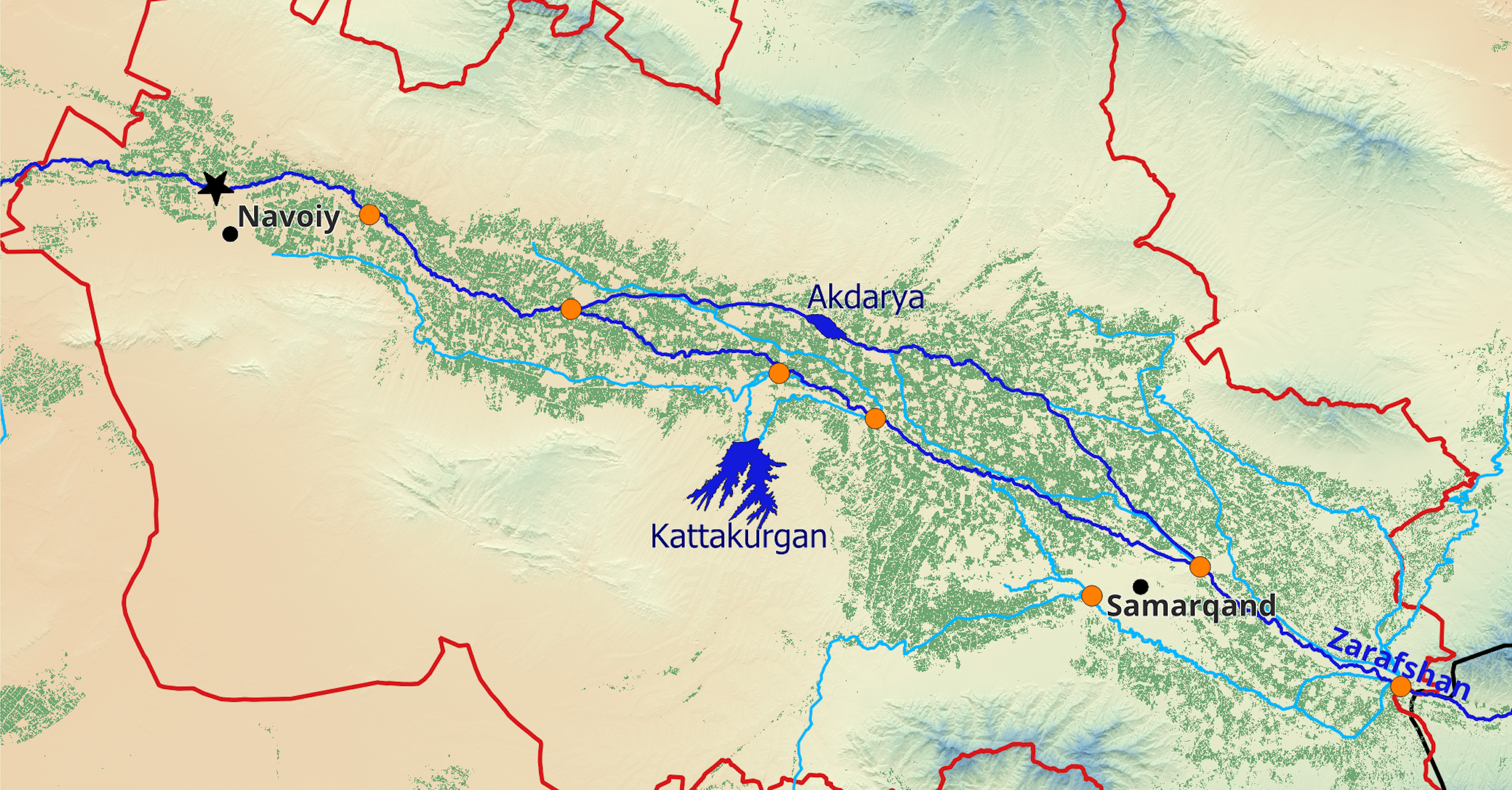Reservoir Bathymetry and Water Accounting in Irrigated Systems using Earth Observation Technology
Hydrosolutions GmbH has developed a remote sensing-based monitoring platform for reservoirs and shallow lakes in India, conducting water budgeting, and looking at the past and present status and trends of water storage. The platform also includes a remote sensing-based crop monitoring system to capture and report on cropping patterns and production in selected reservoir command areas. This approach allows for a better understating of water source, i.e. storage, and water use zone, i.e. irrigated lands. The tool greatly facilitates reservoir monitoring, operation and optimisation of network from the scale of individual reservoirs to the scale of entire states or countries.
Earth Engine App
The tool has been deployed as an Earth Engine app. It relies on free satellite data to track water levels, water areas, water volumes, sediment balances and crop areas at a high temporal and spatial resolution. Through a graphical user interface operators select a water body and have access to statistics and high-resolution images to steer their decisions. The tool can be used to identify hotspots for investment where river reaches have been silted with debris, and/or where the cropping intensity within irrigation schemes strongly varies with available reservoir storage. The tool is currently configured to operate in Gujarat and Kerala States and can be re-configured to serve other geographic areas in India.
Follow this link to explore ee-India-Reservoirs (recommended browser: Google Chrome): https://hydrosolutions.users.earthengine.app/view/india-reservoirs

Current Users
As part of the National Hydrology Project a team of different state and central agencies from India along with WorldBank team members have learned to set up the tool for their area of interests and to use it for their purposes. The National Hydrology Project is an established a platform for Water Agencies in India with the objective to strengthen the capacity of targeted water resources professionals and management institutions.
Advanced Reservoir Analysis
Through a combination of bathymetries and water levels the tool assesses reservoir capacity and reservoir storage changes over time. Data points of water levels, storage and water areas are available every 5 to 10 days during the dry season. Sediment balances indicate the annual rate of sediment deposition or sediment erosion and are available both at the pixel level (10-m spatial resolution) and at the level of the entire water bodies. Annual cropping intensities indicate the number of harvests per year. Information on cropping periods is used in the tool to identify crop water use based on available global evapotranspiration (ET) maps. Multi-annual rainfall data complement the information on how much water is available from storage.
Data
This work builds on freely available remote sensing data from multiple sensors. A multi-band approach is used for water surface detection and cropping intensity mapping, which means that several bands and layers from optical remote sensing imagery are considered for water detection and land use classification.
NASA's Ice, Cloud, and Land Elevation Satellite‐2 (ICESat-2) are combined with optical remote sensing imagery from Sentinel-2 satellite to derive the bathymetry of lakes and reservoirs using the relation between water occurrence and accurate elevation measurements. Reservoir storage capacity and time-series of water levels and storage volume are then derived based on an analysis of the bathymetry maps and changing shoreline positions over time.
Additional datasets uploaded to ee-India-Reservoirs are the inventory of command areas of India and the inventory of reservoirs and lakes of Gujarat and Kerala States.
Bathymetry Generation
Lake and reservoir bathymetries are acquired using the relation between 10 m water occurrence maps and elevation data from ICESat‐2. The methodology is described in detail in Armon et al. (2020). In water bodies with strongly variable water levels surface water probability correlates with terrain elevation. Thus, a straightforward relation between water occurrences and floor elevation over such water bodies can be established.


Sediment Balance
The shoreline method is used to unravel the sediment balances of reservoirs and lakes. The underlying assumption is that all pixels representing the shoreline have the same elevation, and where terrain elevation changes overtime due to sediment movements this is reflected by so-called “shoreline anomalies” (i.e., the terrain elevation of pixels along a shoreline where sediment deposition or erosion takes place does not match with the terrain elevation of shoreline pixels above stable ground, considering the elevation information provided by a recent bathymetry map). The methodology is explained in detail in Ragettli et al. (2022).

Cropping Intensity
The identification of cropping intensities follows a two-step procedure: i) the cropping periods are identified for every pixel, and ii) the cropping intensities are identified. All available Sentinel‑2 scenes are processed to obtain a time series of the normalized difference vegetation index (NDVI) for every pixel. Each annual NDVI time series is then processed to identify the cropping intensity and the month of the beginning and end of first crops, second crops and third crops, if present.
Seasonal and Annual Water Balance
The following seasonal and annual water balance components are provided through the app: the change in reservoir storage given the minimum and maximum observed water levels, the total rainfall over command areas, and total evapotranspiration (ET) over the command area.
Application to Gujarat and Kerala States
The methodology described above is perfectly suitable to monitor reservoir and lakes in Gujarat, where the climatic conditions are ideal for the use of optical remote sensing data (no clouds during the period of irrigation water use) and where water bodies are shallow and ephemeral. More than 200 reservoirs and lakes are currently available for selection in ee-India-Reservoirs in Gujarat.
In Kerala the conditions are more challenging for reservoir monitoring using remote sensing: cloudy conditions are frequent, and the area-volume relation of reservoirs is less straightforward due to a steep topography. Currently only four reservoirs and lakes are therefore available for selection in ee-India-Reservoirs in Kerala. We are planning to integrate higher-resolution satellite imagery into our workflow (e.g, Planet imagery) and/or to ingest commercial high-resolution digital terrain models into future versions of the app.

Downloads
More Projects






